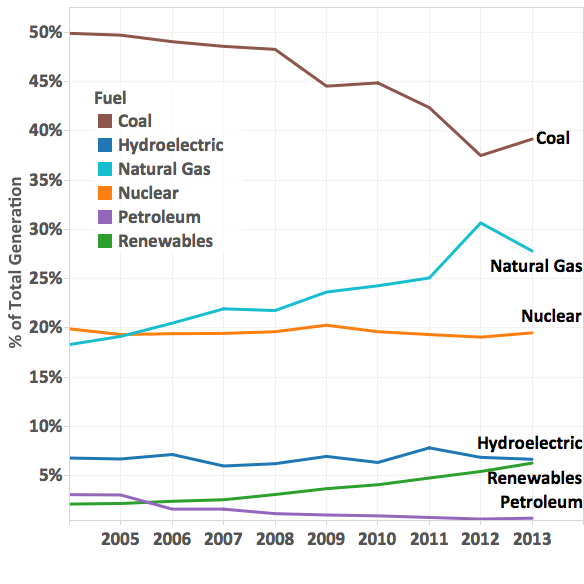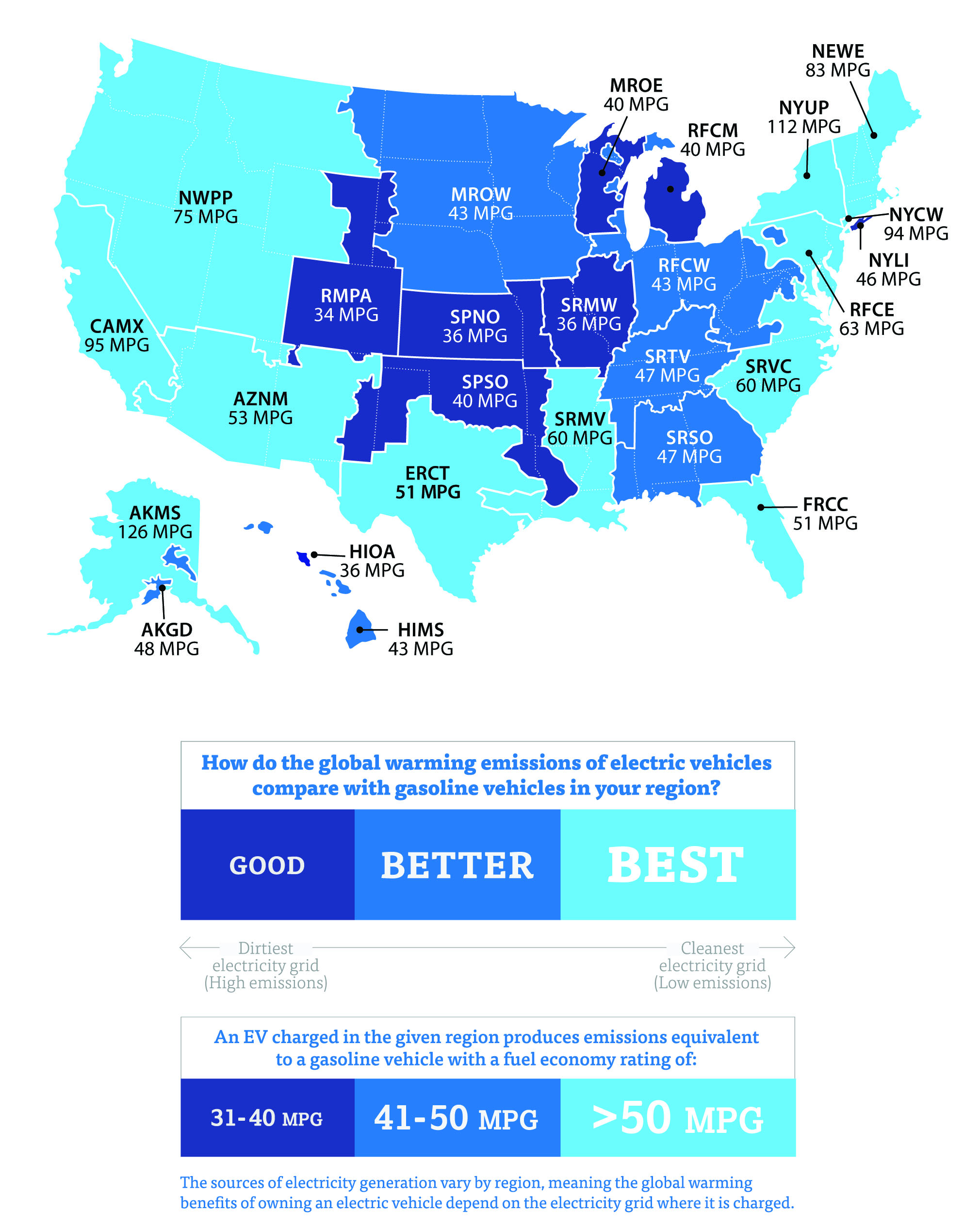A new study from the University of Minnesota shows that plug-in electric vehicles have both an air quality and global warming emissions benefit when they are charged using electricity generated from natural gas or renewable sources. However, the research finds that using electricity from coal-fired power plants in an EV is likely to have worse emissions than an average gasoline vehicle. This result isn’t surprising, but it’s also important to put in context. Many regions in the US use very little coal to generate electricity and the fraction of electricity in the US produced from coal has been dropping – meaning many EVs are delivering emissions benefits today and have the potential to deliver even more in the future.
The authors of the Minnesota study explain the key results of their research.
Clean EVs need clean electricity
These results confirm our State of Charge analysis of the global warming emissions from electric vehicles, which we updated earlier this year. EVs powered on the grid in regions that rely less on coal, and more on renewables and natural gas deliver greater climate benefits. This new research is consistent with that conclusion and adds new information that there are also potential air quality benefits from using electric vehicles in these cleaner regions. The Minnesota study finds air pollution is reduced 50% for an EV using electricity from natural gas and 70% for an EV using wind, water, or solar electricity, when compared to a 29 mpg gasoline car.
Our regional study shows that the majority of the country (60%) lives in areas where an electric vehicle produces less global warming emissions today than even the most efficient gasoline vehicle, the 50 mpg-rated Toyota Prius. In addition, many of the states that are leading in EV adoption are on electric grids that have lower amounts of coal-fired electricity generation. For example, California leads the nation in both fraction and number of electric vehicles and has one of the cleanest electric grids in the U.S.
Electricity generation is getting better, but still needs to improve
This research also highlights the need to move to an electric grid in the U.S. that uses cleaner, renewable sources of power like solar and wind energy and minimizes the mining and burning of coal. Not only will that make electric vehicles cleaner, but also everything else that runs on electricity. It is also important to note that both the UCS and University of Minnesota analysis use detailed electricity generation data that unfortunately is only current to 2010. As shown in the graph below, the fraction of electricity generated in the U.S. using coal has continued to drop since then.We’re already making progress on making the grid cleaner with coal use declining and renewables hitting important milestones. In the last decade coal use has dropped from 50% of electric generation to less than 40%, but we need to continue to make progress on clean electricity power.
Adoption of a strong Clean Power Plan by EPA would build on the progress already being made in many states and ensure that an EV purchased today would only get cleaner the longer you drive it. Not something likely to be true for gasoline powered vehicles as oil companies continue to pursue higher carbon oil sources like tar sands.

U.S. electric power generation by fuel type. Source: Energy Information Agency, U.S. Department of Energy.
Both plug-in electric vehicles and renewable electricity are technologies that are available and moving forward in the United States. Now is the time to move forward on both cleaner vehicles AND electric power to reduce emissions and ensure a healthier planet.

